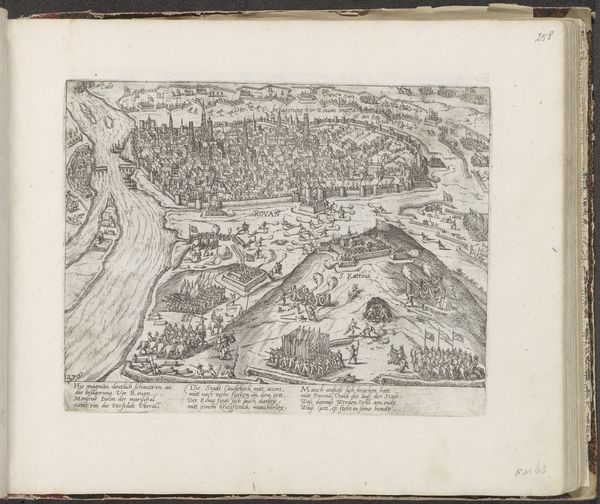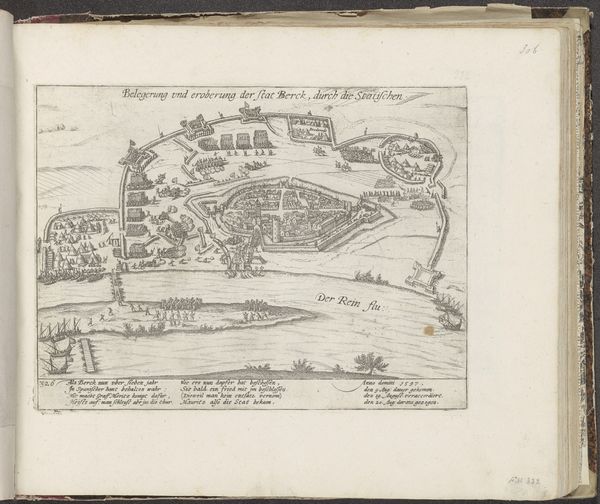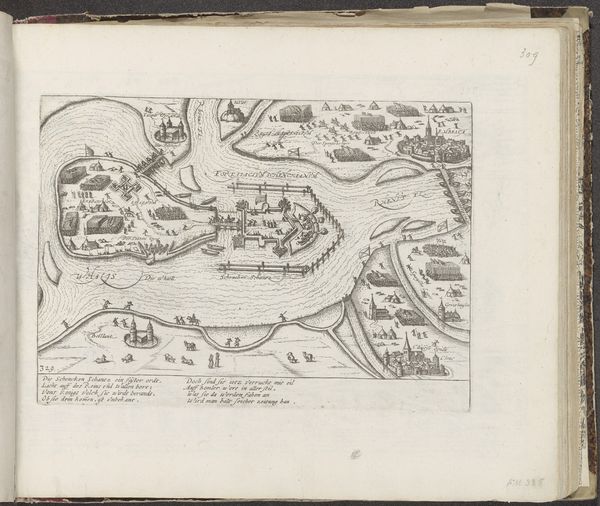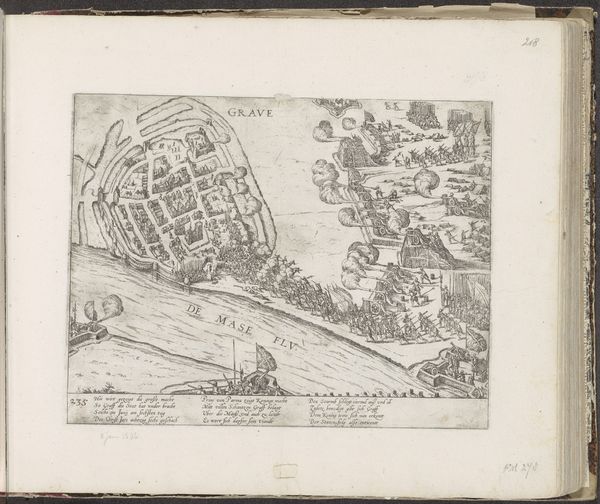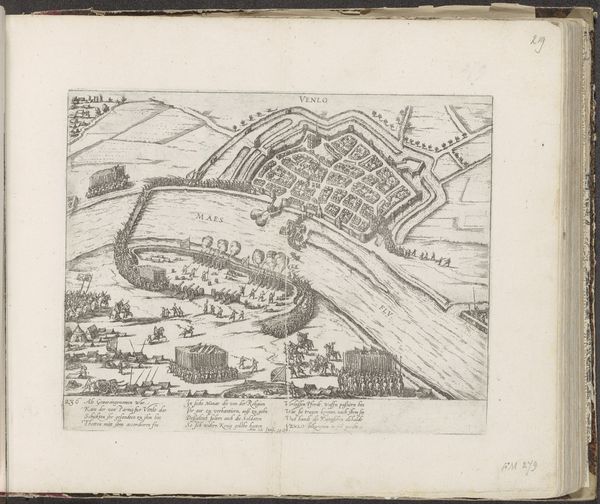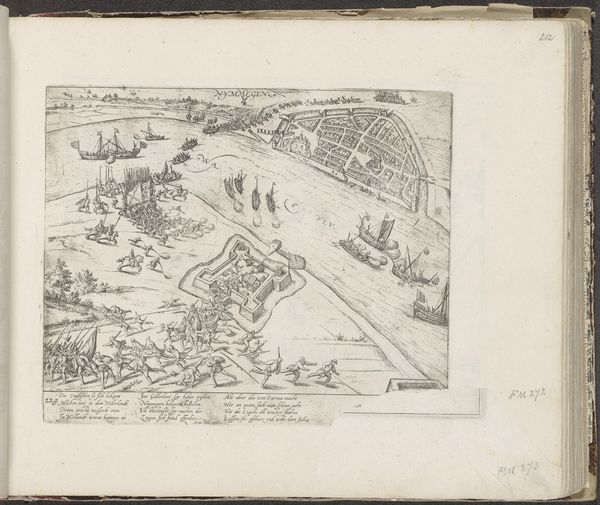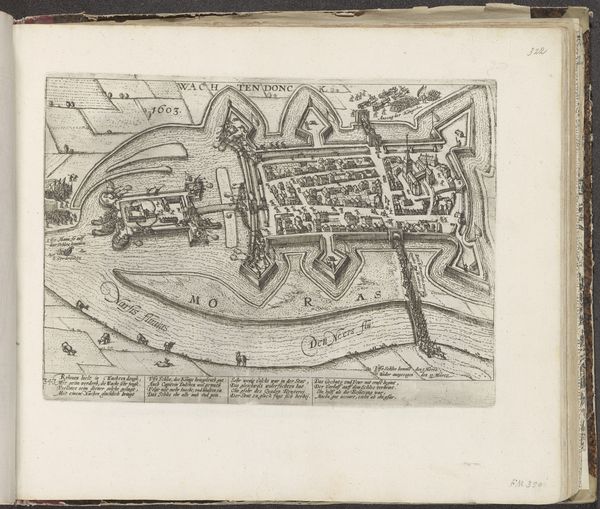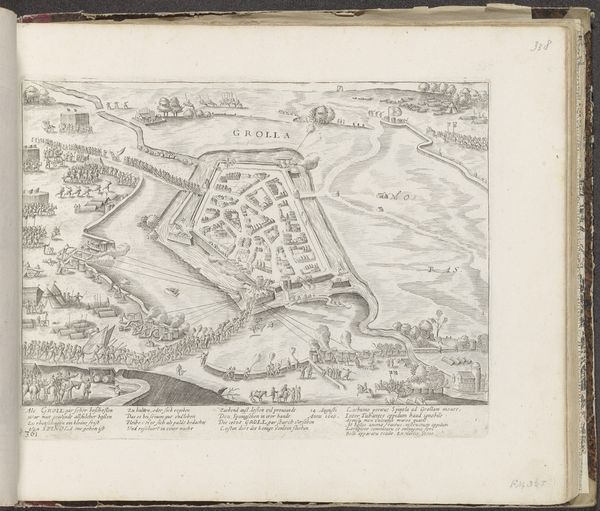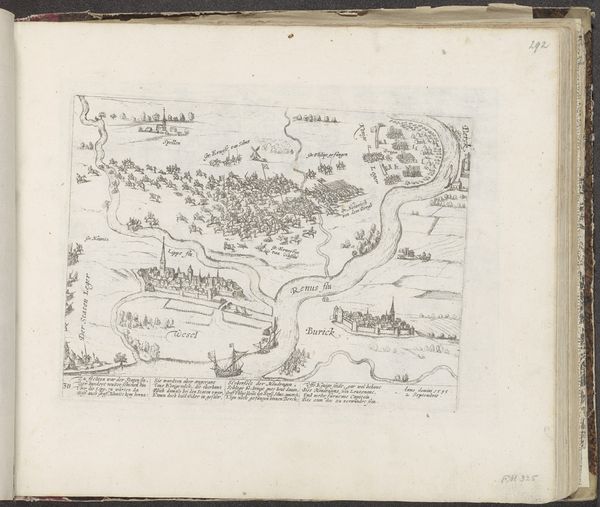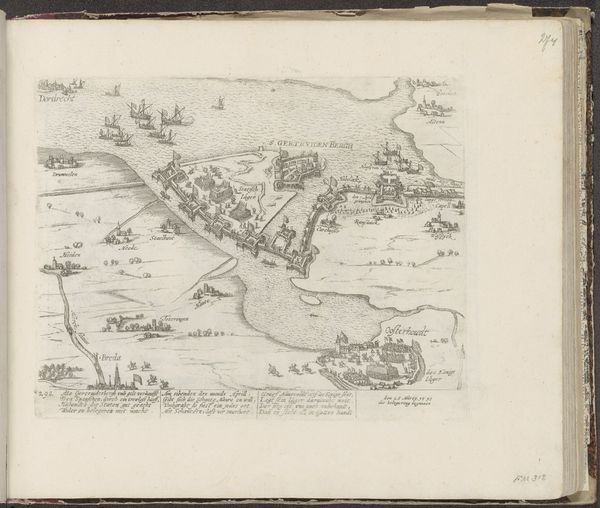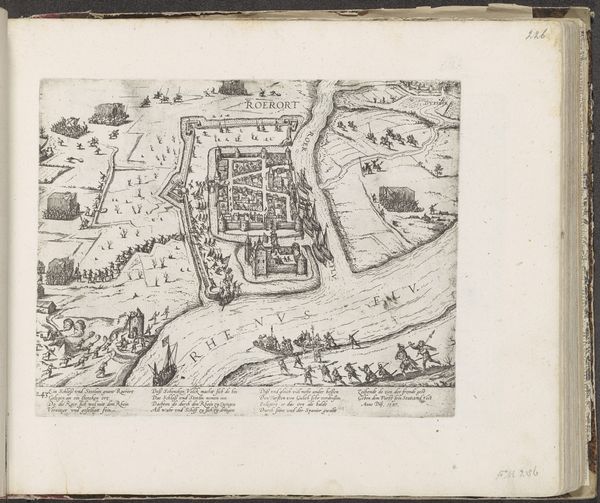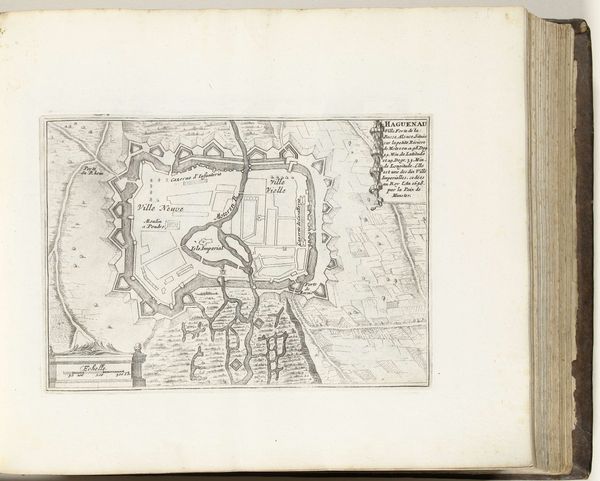
drawing, print, etching, ink
#
drawing
# print
#
etching
#
landscape
#
mannerism
#
ink
#
cityscape
#
history-painting
Dimensions: height 220 mm, width 276 mm
Copyright: Rijks Museum: Open Domain
Curator: Looking at this detailed print, what strikes you first? Editor: Well, aside from the impressive detail, the overwhelming feeling is one of meticulous planning and cold calculation. It's like gazing upon a game board right before the pieces are moved to war. Curator: That's a powerful observation. The Rijksmuseum holds this work titled "Siege of Hulst by the Spanish, 1596," an etching in ink by Frans Hogenberg created sometime between 1596 and 1598. As a print, its cultural role was documentary—to communicate military and political realities across Europe. What symbols stand out to you? Editor: The organization of space is immediately symbolic; the precise delineation between the city and the attacking forces becomes a potent image. The dark masses of soldiers encroaching on the geometric stability of the city's fortifications is extremely potent. You know, the contrast evokes classic figure/ground dynamics. Curator: Indeed. Fortified cities were potent symbols of civic power, embodying collective identity and freedom, a bulwark against chaos. That is powerfully underscored here, no? The encircling Spanish forces are, in a sense, threatening that established order. Notice also the religious symbols depicted on the flags – each invoking divine favor, of course. Editor: The sheer density of marks is compelling. But do the clusters of buildings—which barely escape abstraction—simply represent "buildings," or do they evoke a more profound symbolic system? Curator: The very act of mapping implies power – the ability to survey, to comprehend, and therefore, to control. The city's gridded structure symbolizes order, rationality – the humanist ideals that fueled the Dutch Revolt. It becomes a representation of collective intent to resist. Editor: The etcher also plays with our perspective. We are simultaneously on the ground, amidst the siege, and soaring above, comprehending its totality, and there's something unsettling about it. Curator: These landscapes were designed to impart complex meanings. They visually translated the tensions and drama of a society in conflict. Editor: Knowing its historical context, I find it really intriguing how pure geometric formalism can take on symbolic weight and historical relevance. Thank you! Curator: And seeing the historical through its symbols makes for an interesting lens.
Comments
No comments
Be the first to comment and join the conversation on the ultimate creative platform.

